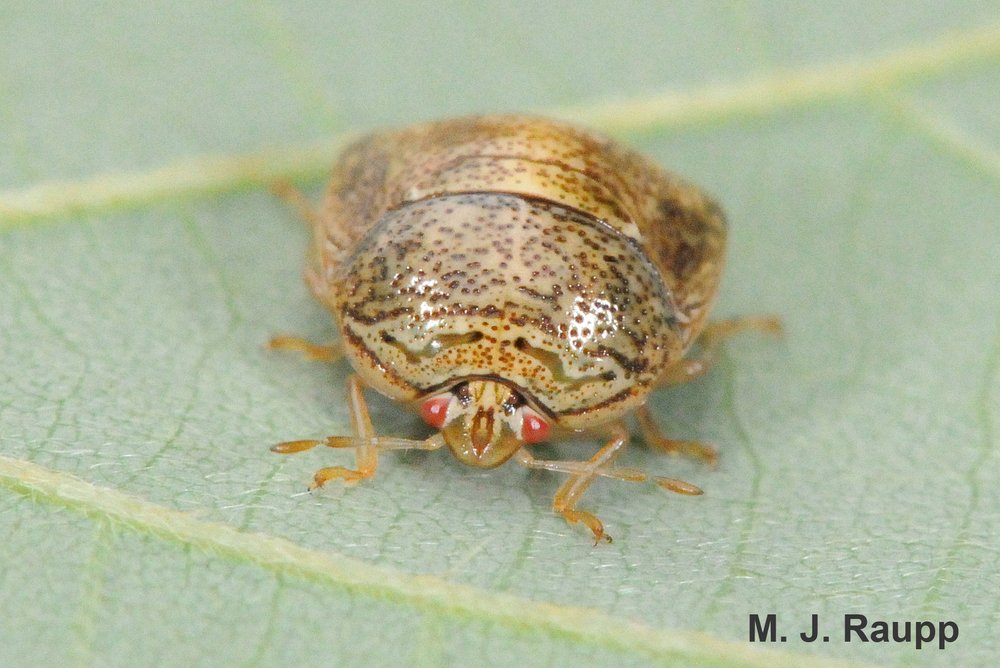What do insects do in winter, Part 3? Avoiding the big chill: emerald ash borers, Agrilus plannipenis, ground beetles, Carabidae, fall webworms, Hyphantria cunea

Overwintering larvae of the dastardly emerald ash borer use cryoprotectants to survive wintry temperatures as low as – 60 degrees Fahrenheit in parts of Canada.

Fall webworms are freeze avoiders. In autumn webworms move from branches to refuges under leaves or in soil to pupate. They produce cryoprotectant compounds in their hemolymph and tissues to avoid a chilly death.
Previously, we learned that some butterflies and true bugs (Hemiptera) simply migrate from frosty regions to warmer, more benign regions in the south to avoid potentially lethal subfreezing temperatures in temperate regions including the DMV. Last week, we discovered how insects known as “freeze tolerant” defy death when the weather turns chilly by producing ice-nucleating compounds that allow water molecules to freeze in extracellular spaces in their body, thereby minimizing destruction and death of cells. These insects also manufacture cryoprotectants that act like antifreeze to prevent tissues from freezing. A third way to survive chilly temperatures in cold places involves a strategy known as freeze avoidance. From a physiological standpoint, freeze avoiders don’t produce ice-nucleating compounds to facilitate the formation of extracellular ice. In fact, they eliminate ice-nucleators like food and microbes to prevent formation of ice in their body. However, like their freeze tolerant relatives, freeze avoiders produce cryoprotectants, including sugar alcohols like glycerol, sorbitol, trehalose. These compounds significantly lower the super cooling point, the temperature at which insects freeze. Additional compounds including antifreeze proteins may also help prevent the formation of ice in the insect’s hemolymph and help prevent internal ice from forming due to exposure to ice outside of the insect’s body. Insects employing freeze avoidance often cheat death until temperatures drop between -4 to – 40 degrees Fahrenheit. However, some juvenile stages of the emerald ash borer survive temperatures as low as – 60 degrees Fahrenheit in parts of Canada. As with freeze-tolerant insects, cues such as changing food availability and quality, changing day length, and cooling temperatures initiate physiological processes to prepare the insect to enter a stage of suspended development called diapause during winter.
Insects living in cold places have evolved clever ways to avoid a chilly death. Dastardly emerald ash borers, killers of ash trees, survive winter temperatures as low as –60 degrees Fahrenheit in parts of Canada. Larval survival is aided by cryoprotectants in their hemolymph. Many ground beetles, like Scarites, move beneath rocks and into the soil to take advantage of the ‘warmer-than-air’ refuge provided by Mother Earth. Some juvenile Lepidoptera like fall webworm caterpillars move from treetops to the ground to pupate. They find thermal refuges under leaves or in soil. Cryoprotectant compounds in their blood and tissues help to avoid a chilly death in winter. Not all insects can tolerate historically “normal” winter lows here in the DMV. Invaders from the south, including harlequin bugs and kudzu bugs, are banished from our region periodically when temperatures dip to the low teens and single digits.

Some invasive species from the south like kudzu bugs have little ability to tolerate winter temperatures in the low teens or single digits. Their presence in colder regions results from periodic recolonizations following cold winters which they cannot survive.
In addition to physiological adaptations enabling insects to tolerate cold wintry temperatures, many have evolved clever behaviors to help avoid cold stress. For example, several species of ground beetles, kin to Scarites beetles we met previously, burrow into the soil to take advantage of the ‘warmer-than-air’ refuge provided by the relatively stable and benign temperatures of the Mother Earth. Other species like fall webworm caterpillars move from the tree tops and wiggle below leaf litter or burrow into cracks in the soil to pupate in autumn, and to gain a thermal refuge from freezing air temperatures. Fall webworms are freeze avoiders and appear to use both trehalose and antifreeze proteins to help them survive winter’s chill. Ah, but not all insects in wintry regions like the DMV are as clever or as lucky as migrants, freeze tolerators, and freeze avoiders we have met in the past month. Some southern visitors to Maryland like harlequin bugs and kudzu bugs have little ability to tolerate our zone 7 and 8 temperatures that dip into the low teens or single digits. In this game of climate change and thermal roulette, a few warm winters of bliss followed by one of single digits, spells local extirpation for species lacking cold tolerance.
Acknowledgements
The following articles provided fascinating insights into the overwintering and anti-freezing strategies of insects: “Insect antifreezes and ice-nucleating agents” by John G. Duman, “Cold Hardiness of Insects and the Impact of Fluctuating Temperatures” by Ashley Dean and Erin Hodgson, “Insect overwintering in a changing climate” by J. S. Bale and S. A. L. Hayward, “Insects and low temperatures: from molecular biology to distributions and abundance” by J. S. Bale, “ Plasticity drives extreme cold tolerance of emerald ash borer (Agrilus planipennis) during a polar vortex” by Meghan E. Duell, Meghan T. Gray, Amanda D. Roe, Chris J.K. MacQuarrie, and Brent J. Sinclair, “Landscape effects on the thermotolerance of carabid beetles and the role of behavioral thermoregulation” by Lucy Alford, Sacha Roudine, Jean‐Sébastien Pierre, Françoise Burel, and Joan van Baaren, and “Cold hardiness characteristic of the overwintering pupae of fall webworm Hyphantria cunea (Drury) (Lepidoptera: Arctiidae) in the northeast of China” by Xiao-Rui Xu, Ming-Ming Zhu, Liang-Liang, Guang-Cai Zhang, Ye Zheng, Ting Li, and Shou-Hui Sun.
This post appeared first on Bug of the Week